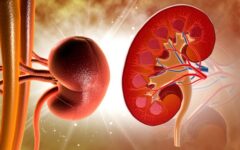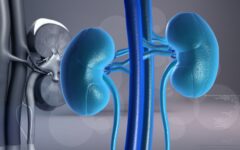Original title: Longitudinal outcomes After Tibioperoneal Angioplasty Alone Compared to Tibial Stenting and Atherectomy for Critical Limb ischemia. Reference: Shaun Reynolds et al. Vascular and and Endovascular Surgery 2013 47(7):507-512 The Infrapatellar peripheral vascular disease has increased in recent years, relating to tissue loss and amputation. The therapeutic strategy is not clear, let alone the use of stents…
Clinical factors to help decide between angioplasty and carotid endarterectomy
Original title: A clinical rule (sex, contralateral occlusion, age, and restenosis) to select patients for stenting versus carotid endarterectomy: Systematic review of observational studies with validation in randomized trials. Reference: Touzé E et al. Stroke. 2013;Epub ahead of print Compared with carotid endarterectomy, angioplasty with stent is associated with an increased risk of pre- procedural stroke especially for…
Endoprosthesis for the treatment of type A aortic dissection
Original title: Application of Open Triple-Branch Aortic Arch Stent Graff for Acute Stanford Type A Aortic Dissection Reference: Fei Hua, et; al. Vascular Endovascular Surgery 47;2:109-14 Type A aortic dissection is a disease of high morbidity and mortality, especially in the early hours . Surgery is the treatment of choice but still have a significant complication rate .…
Type B Aortic Dissection over a 5-year period: lower mortality than medical therapy.
Original title: Survival After Endovascular Therapy in Patients With Type B Aortic Dissection. A Report From the International Registry of Acute Aortic Dissection (IRAD). Reference: Rossella Fattori et al. J Am Coll Cardiol Intv 2013;6:876–82. Endovascular repair of the thoracic aorta is becoming a viable alternative, though its efficacy had not been followed up longer than two years.…
Treatment strategies in Endoprosthesis with documented infection.
Original title: A 14-years Experience with Aortic Endograft Infection: Managemente and Results. Reference: O.T.A. Lyons, et al. European Journal of Vascular and Endovascular Surgery 46;3:306-313 The infection of an Endoprosthesis is a rather infrequent complication, undesirable and associated with poor evolution, with little information in the literature and an unclear treatment strategy. Traditionally, the prosthesis infection has…
Sub intimal recanalization of superficial femoral , femoropopliteal bypass similar results
Original title: Subintimal Recanalization Plus Stenting or Bypass for Management of Claudicants with Femoro-popliteal Occlusions. Reference: Boufi et al. Eur J Vasc Endovasc Surg. Volume 46 Issue 3 September/2013. The main criticism of sub intimal technique is its relative low permeability compared to the surgical technique . Different studies reported a permeability between 56 and 70 % annually .…
Cardiac baroreflex sensitivity can predict response to renal denervation
Original title: Impaired Cardiac Baroreflex Sensitivity Predicts Response to Renal Sympathetic Denervation in Patients with Resistant Hypertension. Reference: Christine S. Zuern et al. J Am Coll Cardiol, article in press. Renal denervation is a new treatment option for patients with resistant arterial hypertension and it is assumed to reduce efferent renal and central sympathetic activity. Given the multifactorial…
High doses of radiation also in peripheral procedures
Original title: Patient radiation exposure during percutaneous endovascular revascularization of the lower extremity. Reference: Einat Segal et al. Journal of Vascular Surgery. Article in press. Percutaneous endovascular revascularization is emerging as the first line treatment for peripheral artery disease for both intermittent claudication and chronic critical limb ischemia. Radiation doses for these interventions, usually prolonged, have not been…
Carotid angioplasty prior to central venous catheter. The best option to solve combined problems.
Original title: A Direct Comparison of Early and Late Outcomes with Three Approaches to Carotid Revascularization and Open Heart Surgery. Reference: Mehdi H. Shishehbor et al. J Am Coll Cardiol, article in press. The prevalence of severe carotid stenosis (> 80%) in patients planning to have a Central Venous Catheter (CVC) is estimated at between 6 and…
Renal denervation for moderate resistant hypertension
Original title: Renal denervation in moderate treatment resistant hypertension. Reference: Christian Ott et al. J Am Coll Cardiol 2013. Article in press. Symplicity trials HTN1 and HTN 2 demonstrated that renal denervation is apparently safe in patients with severe resistant hypertension, (≥ 160 mm Hg despite ≥ 3 drugs including a diuretic). This cut of more than 160…
Pulmonary denervation in primary pulmonary hypertension. First study in humans.
Original title: Pulmonary artery denervation to treat pulmonary arterial hypertension: a single center, prospective, first-in-man PADN-1 study. Reference: Shao-Liang Chen et al. J Am Coll Cardiol. Article in press. Idiopathic pulmonary hypertension is characterized by elevated mean pressure and resistance due to an imbalance between local vasodilator and vasoconstrictor added to the vascular wall renovation. Based on animal…










